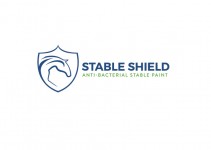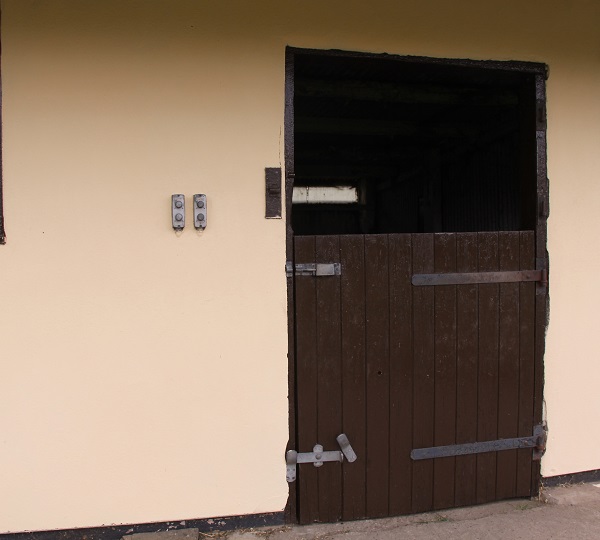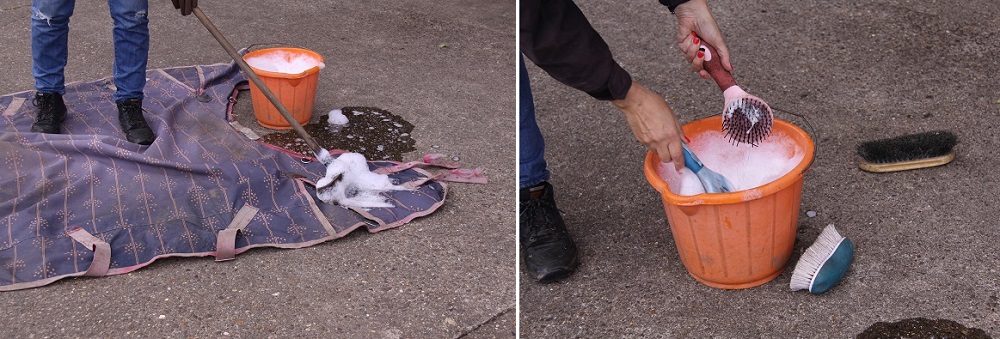Posted: 13th September 2017 | Back to news feed

Isolation in horses is essential if there is a risk of disease spreading to other horses, humans or the environment so taking special precautions is essential. Here David Jeffreys of Stable Shield Anti-Bacterial Paint provides advice on helping to prevent the spread of disease.
There could be multiple reasons why a horse may need to be isolated such as bringing a new horse onto a yard or if a horse becomes ill with a contagious agent. Below are some tips and advice to remember when developing an isolation stable.
1. The isolation premises should be a separate, enclosed building that can be easily cleansed and disinfected effectively. If you do not have a separate isolated stable, a designated stall at the end of the yard with only one designated entry and exit could be an alternative however this would not be as effective.

2. General cleanliness and disinfecting needs to be done to a high standard to prevent the spread of diseases and the growth of bacteria. It is beneficial to take some biosecurity measures outside of the stable as well as inside such as protecting the feed room and water area to prevent the spread of diseases, infections and the growth of bacteria. Stable Shield Anti-Bacterial Paint will help to do this as it kills 99.8% of bacteria and lasts for three to five years depending on the product.

3. Wash all rugs and disinfect previously used brushes to stop the spread of disease.

4. Dispose of manure in an isolated area to prevent the spread of harmful bacteria.
5. The isolated horse’s temperature should be checked daily to recognise any infections or changes in their condition.
6. The same equipment such as grooming brushes, feed utensils and wheelbarrows should only be used in the isolation premises and not shared; this includes the hose pipe for filling up the water in case it touches the sides of the bucket.
7. It is advised to wear gloves and protective clothing while entering the isolation location, anything that touches an infected horse carries secretions from the sick horse which has the potential to transfer pathogens to other horses. For this reason it is also advisable that the same one person cares for the isolated horse. On the topic of the carer they should also make sure to wash their footwear thoroughly, disinfecting their shoes before entering the stable and when exiting the isolated stable.
8. It may seem like the obvious thing to do but it is important to inform the other people who access the yard what is happening to the horse and why so that they have an understanding of the situation and can keep an eye out on their own horses in case they spot any signs of the same disease occurring.
9. If the horse has travelled in a horse box recently, do not forget to disinfect and sterilise the horse box.
10. Isolate your horse to one confined space. If you turn your horse out it can contaminate the grazing the land.
Stable Shield Antibacterial Paint is a water-based non-toxic paint that can be applied to stables to create a fully disinfected yard. The paint prevents the growth of bacteria by up to 99.8% on all applied surfaces. This in turn creates a clean environment which is crucial to help horses with their respiratory system and overall wellbeing.
For further information about Stable Shield products contact 01386 423999 or visit www.stableshield.co.uk.

The Equestrian Index newsfeed is compiled from articles submitted by advertising members and expresses the opinions of those members. Watsons Directories Ltd shall not be held liable for any inaccuracies or mis-statements therein.
